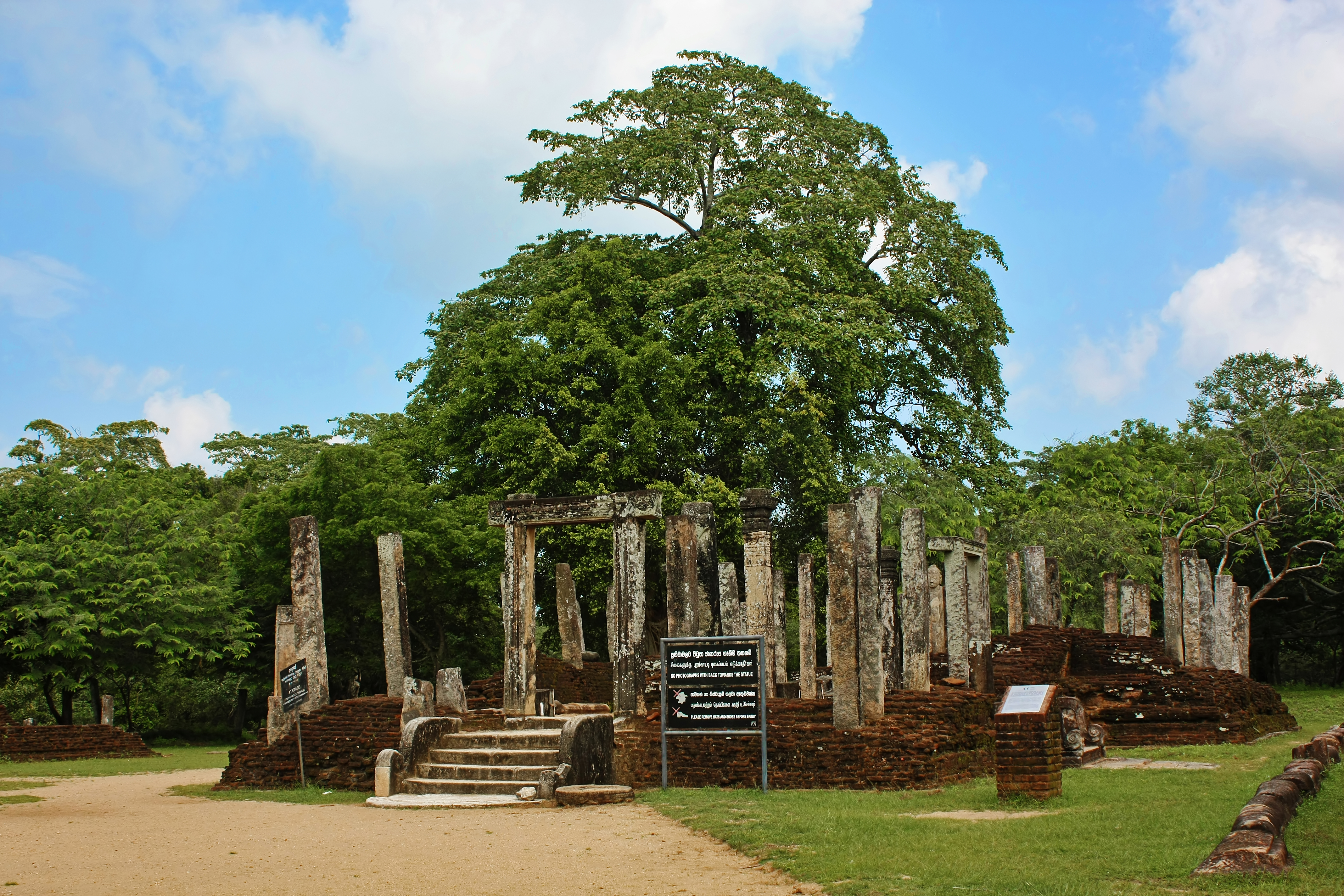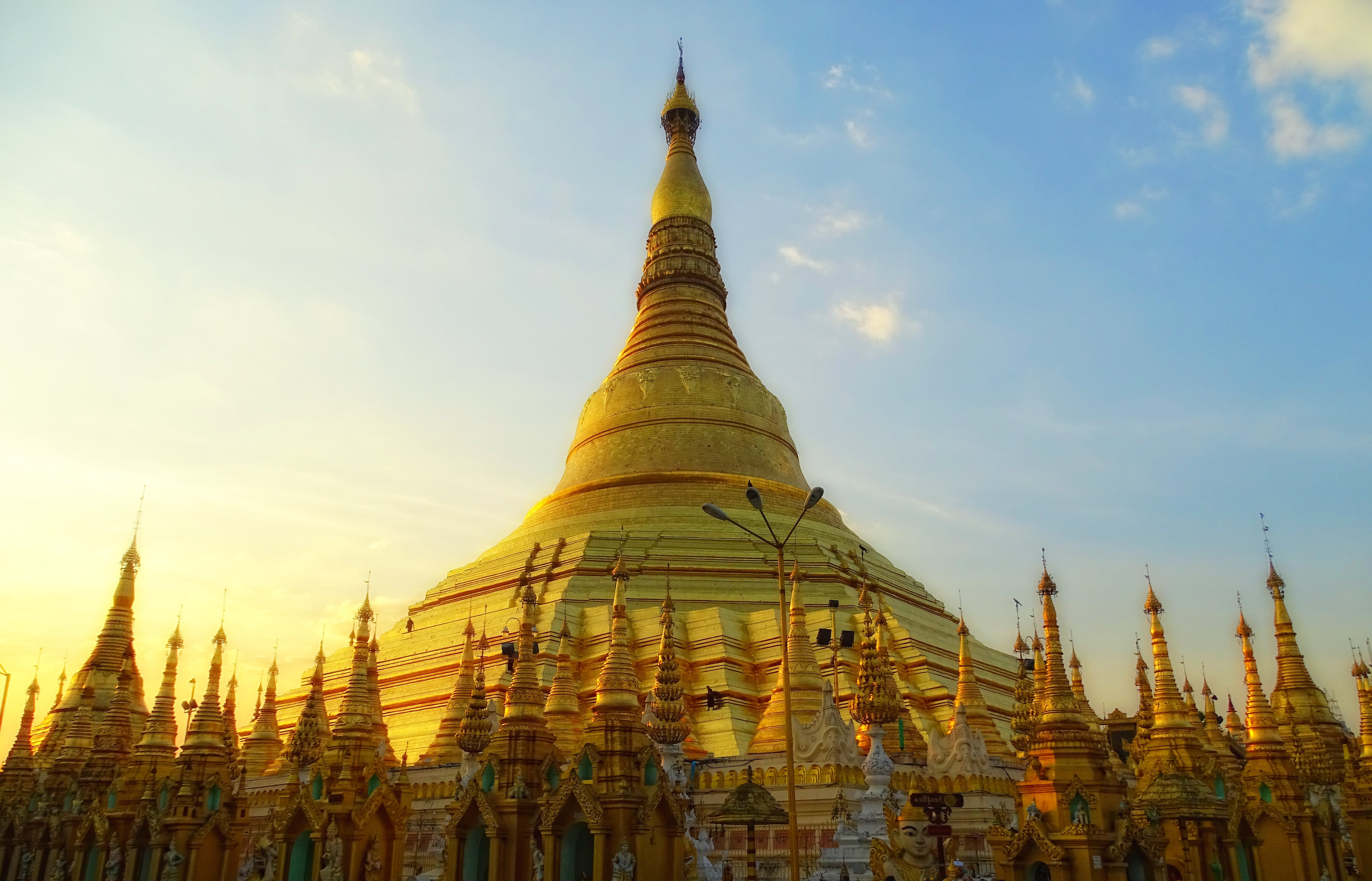|
World Peace Pagoda
Kaba Aye Pagoda ( my, ကမ္ဘာအေးစေတီ; ; also spelt Gaba Aye Pagoda; lit. World Peace Pagoda), formally Thiri Mingala Gaba Aye Zedidaw, ), is a Buddhist pagoda located on Kaba Aye Road, Mayangon Township, Yangon, Myanmar. The pagoda was built in 1952 by U Nu in preparation for the Sixth Buddhist Council that he held from 1954 to 1956. The pagoda measures high and is also around the base. The pagoda is located approximately 11 km north of Yangon, a little past the Inya Lake Hotel. The Maha Pasana Guha (great cave) was built simultaneously with the Kaba Aye Pagoda and is located in the same complex. The cave is a replica of the Satta Panni cave, located in India, where the First Buddhist Synod was convened. The six entrances of The Maha Pasana Cave symbolize the Sixth Great Synod. The cave is long and wide. Inside, the assembly hall is long and wide. Background As prime minister of Burma, U Nu built the Kaba Aye Pagoda and the Maha Pa ... [...More Info...] [...Related Items...] OR: [Wikipedia] [Google] [Baidu] |
Yangon
Yangon ( my, ရန်ကုန်; ; ), formerly spelled as Rangoon, is the capital of the Yangon Region and the largest city of Myanmar (also known as Burma). Yangon served as the capital of Myanmar until 2006, when the military government relocated the administrative functions to the purpose-built capital city of Naypyidaw in north central Myanmar. With over 7 million people, Yangon is Myanmar's most populous city and its most important commercial centre. Yangon boasts the largest number of colonial-era buildings in Southeast Asia, and has a unique colonial-era urban core that is remarkably intact. The colonial-era commercial core is centered around the Sule Pagoda, which is reputed to be over 2,000 years old. The city is also home to the gilded Shwedagon Pagoda – Myanmar's most sacred and famous Buddhist pagoda. Yangon suffers from deeply inadequate infrastructure, especially compared to other major cities in Southeast Asia, such as Jakarta, Bangkok or Hanoi. Though ... [...More Info...] [...Related Items...] OR: [Wikipedia] [Google] [Baidu] |
Maha Wizaya Pagoda
The Maha Wizaya Pagoda ( my, မဟာဝိဇယစေတီ; pi, Māhavijayacetiya) is a pagoda located on Shwedagon Pagoda Road in Dagon Township, Yangon, Myanmar. The pagoda, built in 1980, is located immediately south of the Shwedagon Pagoda on Dhammarakhita Hill. The enshrined relics were contributed by the King of Nepal, while the pagoda's hti (umbrella) was consecrated by Ne Win, the country's former leader. The construction of this particular pagoda is believed by some scholars to have been a form of merit-making on the part of Ne Win. The pagoda was built to commemorate the convening of the First Congregation of All Orders for the Purification, Perpetuation and Propagation of Sasana in 1980, which formed the State Sangha Maha Nayaka Committee The State Saṅgha Mahā Nāyaka Committee ( my, နိုင်ငံတော် သံဃာ့မဟာနာယကအဖွဲ့, abbreviated Mahana or in Burmese, SSMNC in English) is a government-appointed body of h ... [...More Info...] [...Related Items...] OR: [Wikipedia] [Google] [Baidu] |
ABSDF
The All Burma Students' Democratic Front ( my, မြန်မာနိုင်ငံလုံးဆိုင်ရာကျောင်းသားများဒီမိုကရက်တစ်တပ်ဦး; abbreviated ABSDF or မကဒတ) is an opposition group in Myanmar (also known as Burma). It was founded on 1 November 1988, after the 8888 protests in Yangon. The group's leadership consists mostly of former student exiles. The ABSDF operates an armed wing, which has fought alongside other armed opposition groups in Myanmar, such as the Kachin Independence Army and the Karen National Liberation Army. Objectives The objective of the group is to free the people of Myanmar from the oppression of the military, to create a democracy with political freedom and respect for human rights, to obtain nationwide peace, and to introduce a federal system in the country. Leadership The ABSDF elects its leadership democratically, with leaders of the organisation serving for th ... [...More Info...] [...Related Items...] OR: [Wikipedia] [Google] [Baidu] |
SLORC
The State Peace and Development Council ( my, နိုင်ငံတော် အေးချမ်းသာယာရေး နှင့် ဖွံ့ဖြိုးရေး ကောင်စီ ; abbreviated SPDC or , ) was the official name of the Military dictatorship, military government of Burma (Myanmar) which, in 1997, succeeded the State Law and Order Restoration Council ( my, နိုင်ငံတော်ငြိမ်ဝပ်ပိပြားမှုတည်ဆောက်ရေးအဖွဲ့ that seized power under the rule of Saw Maung in 1988. On 30 March 2011, Senior General and Council Chairman Than Shwe signed a decree that officially dissolved the council. From 1988 to 1997, the junta was known as the State Law and Order Restoration Council ( my, နိုင်ငံတော် ငြိမ်ဝပ်ပိပြားမှု တည်ဆောက်ရေးအဖွဲ့, links=no; abbreviated SLORC or ), which had succeeded the P ... [...More Info...] [...Related Items...] OR: [Wikipedia] [Google] [Baidu] |
Tooth Relic
The relic of the tooth of Buddha (Pali ''danta dhātuya'') is venerated in Sri Lanka as a sacred cetiya relic of Lord Buddha, who is the founder of Buddhism, the fourth largest religion worldwide. History The relic in India According to Sri Lankan legends, when the Buddha died in 543 BC, his body was cremated in a sandalwood pyre at Kushinagar and his left canine tooth was retrieved from the funeral pyre by his disciple, Khema. Khema then gave it to King Brahmadatte for veneration. It became a royal possession in Brahmadatte's country and was kept in the city of Dantapuri (modern Puri, Odisha). A belief grew that whoever possessed the tooth relic had a divine right to rule that land. The '' Dāṭhāvaṃsa'' recounts the tale of a war fought over the relic 800 years later between Guhasiva of the republic of Kalinga and a king named Pandu. The relic in Sri Lanka Legend states the Abhayagiri vihāra was first appointed custodianship of the relic when it was brought to the i ... [...More Info...] [...Related Items...] OR: [Wikipedia] [Google] [Baidu] |
Pagan Dynasty
The Kingdom of Pagan ( my, ပုဂံခေတ်, , ; also known as the Pagan Dynasty and the Pagan Empire; also the Bagan Dynasty or Bagan Empire) was the first Burmese kingdom to unify the regions that would later constitute modern-day Myanmar. Pagan's 250-year rule over the Irrawaddy valley and its periphery laid the foundation for the ascent of Burmese language and culture, the spread of Bamar ethnicity in Upper Myanmar, and the growth of Theravada Buddhism in Myanmar and in mainland Southeast Asia.Lieberman 2003: 88–123 The kingdom grew out of a small 9th-century settlement at Pagan (present-day Bagan) by the Mranma/Burmans, who had recently entered the Irrawaddy valley from the Kingdom of Nanzhao. Over the next two hundred years, the small principality gradually grew to absorb its surrounding regions until the 1050s and 1060s when King Anawrahta founded the Pagan Empire, for the first time unifying under one polity the Irrawaddy valley and its periphery. By t ... [...More Info...] [...Related Items...] OR: [Wikipedia] [Google] [Baidu] |
Pāli Canon
The Pāli Canon is the standard collection of scriptures in the Theravada Buddhist tradition, as preserved in the Pāli language. It is the most complete extant early Buddhist canon. It derives mainly from the Tamrashatiya school. During the First Buddhist Council, three months after the parinibbana of Gautama Buddha in Rajgir, Ananda recited the Sutta Pitaka, and Upali recited the Vinaya Pitaka. The Arhats present accepted the recitations and henceforth the teachings were preserved orally by the Sangha. The Tipitaka that was transmitted to Sri Lanka during the reign of King Asoka were initially preserved orally and were later written down on palm leaves during the Fourth Buddhist Council in 29 BCE, approximately 454 years after the death of Gautama Buddha. The claim that the texts were "spoken by the Buddha", is meant in this non-literal sense. The existence of the bhanaka tradition existing until later periods, along with other sources, shows that oral tradition conti ... [...More Info...] [...Related Items...] OR: [Wikipedia] [Google] [Baidu] |
Shin Arahan
, image =Shin Arahan.JPG , caption = Statute of Shin Arahan in Ananda Temple , birth name = , alias = , dharma_name = mnw, ဓမ္မဒဿဳ , birth_date = c. 1034 , birth_place = Thaton , death_date = 1115 (age 80) , death_place = Pagan , nationality = Burmese , religion = Buddhism , school = Theravada , lineage = Conjeveram-Thaton , title = Sayadaw , location = Pagan , education = , occupation = Buddhist monk , teacher = , predecessor = , successor = Shin Panthagu , students = Shin Panthagu , website = The Venerable Shin Arahan ( my, ရှင်အရဟံ ; formally, Dhammadassī Mahāthera, ; 1034 – 1115) was Thathanabaing of Burma of the Pagan Kingdom from 1056 to 1115. The monk, a native of Thaton Kingdom, was the religi ... [...More Info...] [...Related Items...] OR: [Wikipedia] [Google] [Baidu] |
Thaton Kingdom
The Thaton Kingdom, Suwarnabhumi, or Thuwunnabumi ( my, သထုံခေတ် or ) was a Mon kingdom, believed to have existed in Lower Burma from at least the 4th century BC to the middle of the 11th century AD. One of many Mon kingdoms that existed in modern-day Lower Burma and Thailand, the kingdom was essentially a city-state centered on the city of Thaton. It traded directly with South India and Sri Lanka, and became a primary center of Theravada Buddhism in South-East Asia. Thaton, like other Mon kingdoms, faced the gradual encroachment of the Khmer Empire. But it was the Pagan Kingdom from the north that conquered the fabled kingdom in 1057. Name of the kingdom Mon tradition maintains that the kingdom was called Suvannabhumi ( my, သုဝဏ္ဏဘူမိ), a name also claimed by Lower Thailand, and that it was founded during the time of the Buddha in the 6th century BCE. Thaton is the Burmese name of Sadhuim in Mon, which in turn is from Sudhammapura ... [...More Info...] [...Related Items...] OR: [Wikipedia] [Google] [Baidu] |
Anawrahta
Anawrahta Minsaw ( my, အနော်ရထာ မင်းစော, ; 11 May 1014 – 11 April 1077) was the founder of the Pagan Empire. Considered the father of the Burmese nation, Anawrahta turned a small principality in the dry zone of Upper Burma into the first Burmese Empire that formed the basis of modern-day Burma (Myanmar).Harvey 1925: 34Htin Aung 1967: 38 Historically verifiable Burmese history begins with his accession to the Pagan throne in 1044.Coedès 1968: 133, 148–149, 155 Anawrahta unified the entire Irrawaddy valley for the first time in history, and placed peripheral regions such as the Shan States and Arakan (Rakhine) under Pagan's suzerainty. He successfully stopped the advance of Khmer Empire into Tenasserim coastline and into Upper Menam valley, making Pagan one of two main kingdoms in mainland Southeast Asia. A strict disciplinarian, Anawrahta implemented a series of key social, religious and economic reforms that would have a lasting impact ... [...More Info...] [...Related Items...] OR: [Wikipedia] [Google] [Baidu] |
Shwedagon Pagoda
The Shwedagon Pagoda (, ); mnw, ကျာ်ဒဂုၚ်; officially named ''Shwedagon Zedi Daw'' ( my, ရွှေတိဂုံစေတီတော်, , ) and also known as the Great Dagon Pagoda and the Golden Pagoda is a gilded stupa located in Yangon, Myanmar. The Shwedagon is the most sacred Buddhist pagoda in Myanmar, as it is believed to contain relics of the four previous Buddhas of the present kalpa. These relics include the staff of Kakusandha, the water filter of Koṇāgamana, a piece of the robe of Kassapa, and eight strands of hair from the head of Gautama. Built on the high Singuttara Hill, the tall pagoda stands above sea level,The pagoda's pinnacle height (to the tip of its ''hti'') is tall per (UNESCO 2018), and is built on the Singuttara Hill, which is tall per , and tall above sea level per and dominates the Yangon skyline. Yangon's zoning regulations, which cap the maximum height of buildings to above sea level (75% of the pagoda's sea ... [...More Info...] [...Related Items...] OR: [Wikipedia] [Google] [Baidu] |




